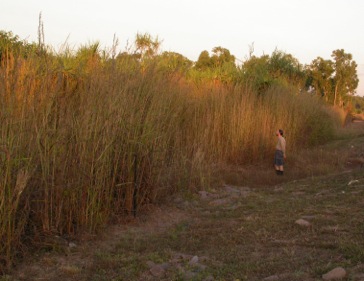Gamba grass a risk to Biodiversity and Birders
The weed, Gamba Grass, Andropogon gayanus, infests 1.5 million hectares of savanna woodland in the Top End and could invade 38 million ha (Douglas, et al., 2012). It is rapidly spreading (Beaumont et al., 2018).
Gamba fuels annual conflagrations that eventually kill off all vegetation. Properties can loose 50% of mature trees in one fire. One site, Gamba-free in 1999 was infested by 2005, and had 140 dead trees per ha killed by Gamba-fuelled fire (Brooks et al., 2010).
Some birds’ ranges, eg Gouldian Finch, Hooded Parrot, and Partridge Pigeon (eastern spp.) lie entirely within the reach of this weed. Some Gouldian Finch sites are already infested
The fires are intense and spread rapidly and could put unsuspecting birders at risk. When working at Gamba Grass infested sites extra precautions are necessary. BirdLife Australia has the safety of volunteers in mind and advises not to conduct fieldwork or outings on total fire ban days.
In 2008, 200 concerned weed scientists and ecologists called on governments to ban the use of Gamba grass (McFayden et al., 2008). However, graziers are still permitted by the NT Government to maintain the weed as cattle pasture (Schatz, 2019).

